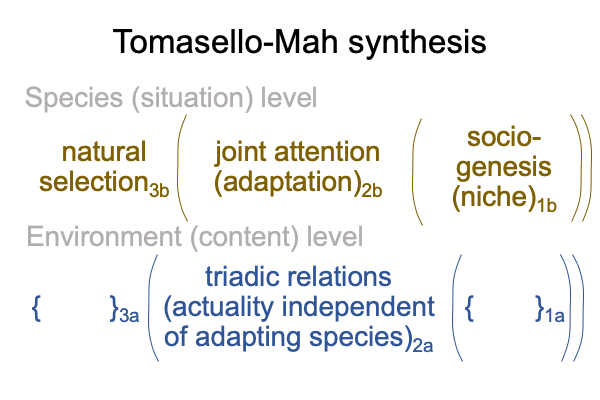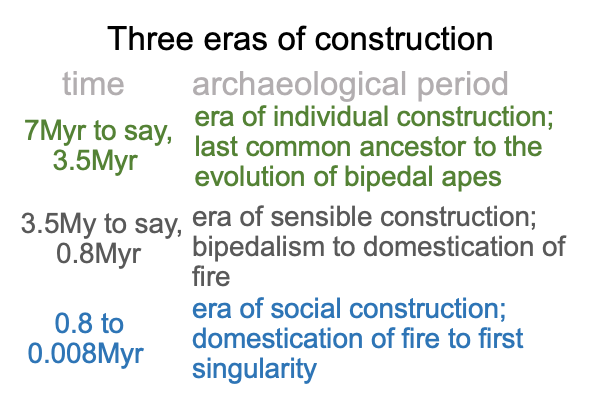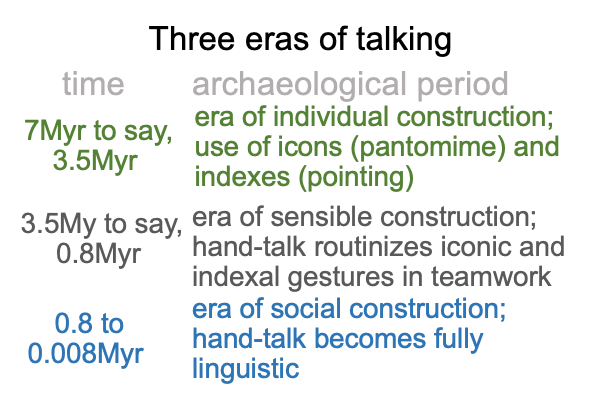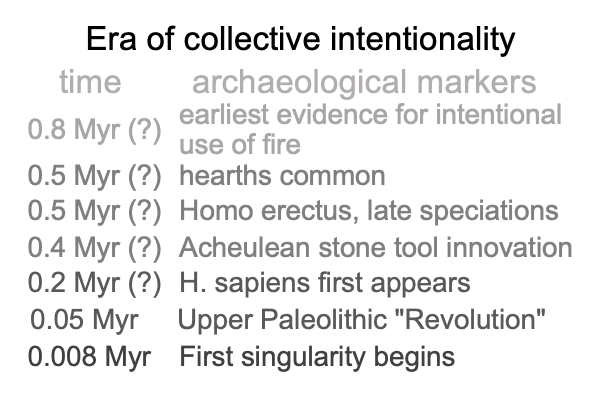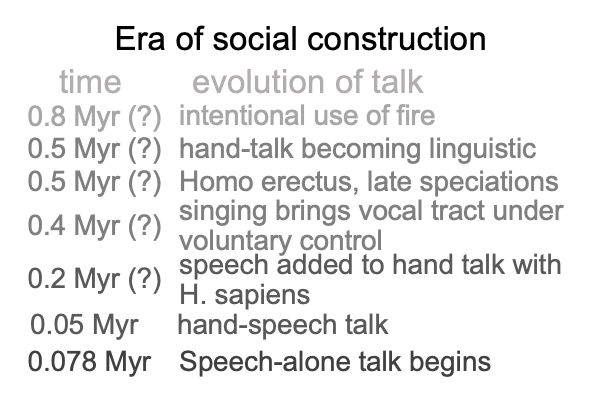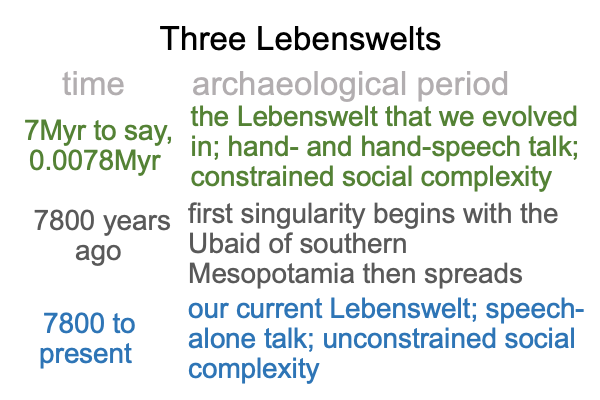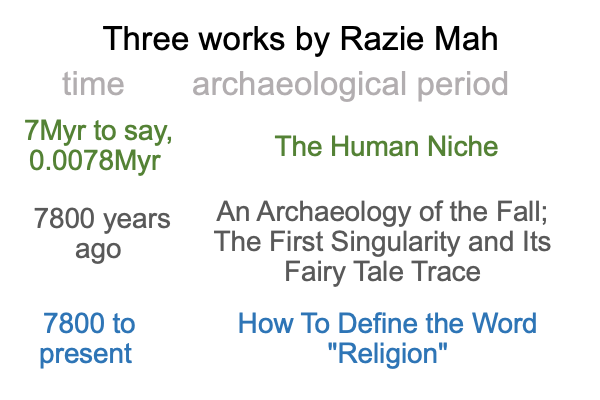Looking at Michael Tomasello’s Book (2016) “A Natural History of Human Morality” (Part 1 of 22)
0389 The book before me published by Harvard University Press, Cambridge, Massachusetts. The question? What makes humans unique? The approach is scientific. Humans think differently than great apes, their closest biological kin. One way to understand that difference is to observe and measure the cognitive capacities of human newborns and infants, as well as the cognitive abilities of adult great apes.
This book belongs to a decades-long arc of inquiry by the author. During much of this time, Michael Tomasello serves as co-Director of the Max Planck Institute for Evolutionary Anthropology in Leipzig, Germany. I cover two decades in my examinations. Here is the fourth book in the list.

0390 What has this semiotician found so far?
First, from the very start of his journey, the content-level of Tomasello’s vision corresponds to the situation-level of Razie Mah’s hypothesis. The ultimate human niche consists of the potential of triadic relations.
Razie Mah’s hypothesis applies the two-level interscope for Darwin’s paradigm to human evolution.
0391 First, the general Darwinian paradigm looks like this.

0392 In The Human Niche (available at smashwords and other e-book venues), Razie Mah proposes that the ultimate human niche1b is the potential of triadic relations.
Tomasello’s hypothesis that joint attention2b and shared intentionality2b are behavioral and cognitive adaptations to the niche of sociogenesis1b reconfigures the situation-level of Darwin’s paradigm, resulting in what I call the “Tomasello-Mah synthesis”.
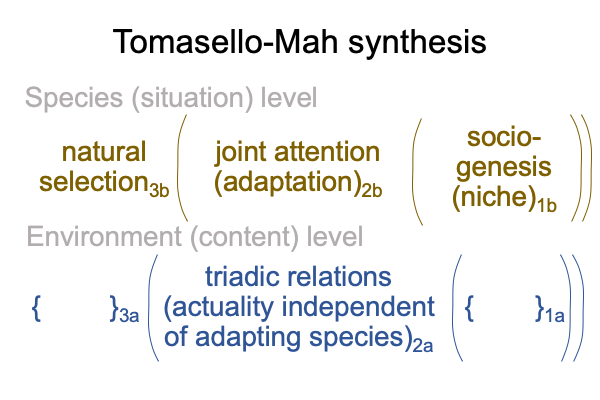
0393 Yes, fortune turns her wheel. Tomasello does not know Mah’s hypothesis. Tomasello’s arc of inquiry is underway in 1999. Mah’s hypothesis first appears online in 2018. So, Tomasello configures his insight, corresponding to the situation-level of the Darwinian paradigm, as the content-level of his vision.
Tomasello’s vision offers a way to bring a phenotype (of human ontogeny2c’) into relation with a foundational adaptation (of joint attention2a’). But, according to Mah, phenotype and adaptation are two independent fields of evolutionary inquiry. One does not situate or contextualize the other. Rather, the two intersect.
Consequently, Tomasello’s vision resolves the internal contradictions of the intersection of genetics and natural history,by assigning the phenotype to the category of thirdness and the adaptation to the category of firstness, while maintaining the actuality of both.
0394 Here is a picture of Tomasello’s vision.
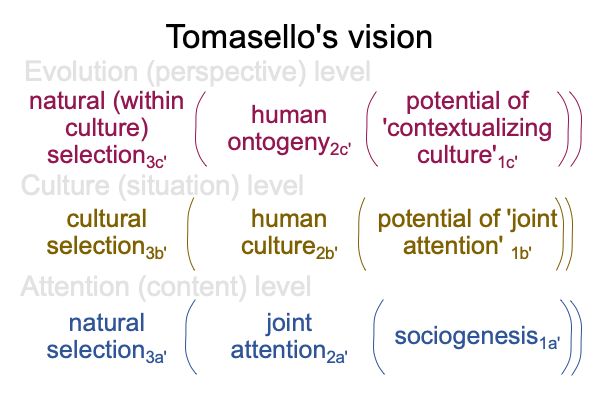
0395 Of course, this examination appears precisely 25 years after Tomasello’s vision is cast in 1999 AD.
His vision is maintained throughout his arc of inquiry.
Consequently, his conclusions carry an awkward emptiness. The emptiness compares to the basement of a house. The basement is dark, cool, foundational and ignored, until of course, one must seek refuge in a storm.
0396 The previous examinations of Tomasello’s works demonstrate that the house, the abode of his vision, is furnished with morality.
Tomasello can ignore the basement, haunted by immaterial beings called, “triadic relations”. Yet, in that place, where a family might store potatoes, onions, smoked meat, along with luggage and Christmas ornaments, dwells something that Tomasello may safely ignore. I call that ghost, “religion”.

